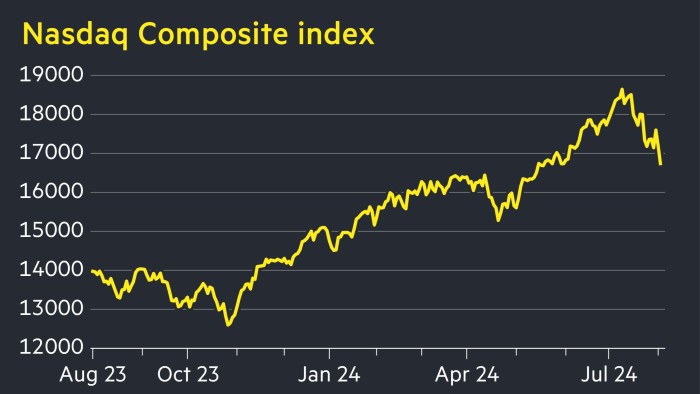U.S. equities neared record levels as oil prices saw a reduction, spurred by optimism that the Israel-Iran conflict won’t hinder the worldwide oil distribution. On Tuesday, domestic stocks ascended in response to oil costs subsiding, underpinned by the belief that the international oil supply chain won’t be negatively impacted by the hostilities in the Middle East.
The S&P 500 index rose by 1.1%, echoing substantial advancements seen in European and Asian stock markets. The surge followed U.S. President Donald Trump’s announcement late Monday that a total ceasefire had been agreed upon by Israel and Iran. The de facto benchmark of Wall Street’s performance now sits just 0.8% shy of its February record peak, rebounding from the nearly 20% drop experienced earlier in spring.
The Dow Jones Industrial Average welcomed a spike of 507 points, equivalent to a 1.2% gain, while the tech-heavy Nasdaq composite went up 1.4%. However, the most significant movement was observed in the oil market. American crude oil saw a 6% drop per barrel setting its price at $64.37.
Brent crude, serving as the global standard in oil pricing, followed a similar trend. Throughout the ongoing Israel-Iran tensions, worries have run high regarding potential impacts on the global oil supply. With Iran being a key contributor to global crude oil and controlling a significant route for oil transportation – the Strait of Hormuz – possibilities for escalated oil prices and subsequent economic drawbacks were imminent.
Almost 20% of global daily oil demands traverse the Strait of Hormuz via sea shipments. However, oil prices took a downward turn on Monday following Iran’s implementation of a proportionately measured counterstrike against the U.S. entrance into the war, carefully avoiding disturbances to oil production and distribution.
Moreover, the decline in oil prices continued, even after Iran surpassed an early Tuesday deadline to cease hostilities. President Trump subsequently confirmed that the ceasefire was operational. The sharp dip in oil costs over the past two days puts the prices lower than those before the commencement of the military conflict just under a fortnight ago.
Given the sufficient supply in the global oil market and the increased output of the OPEC+ countries, oil prices may be pushed even lower provided the ceasefire endures and a sustainable resolution for peace is attained. A slump in oil prices could potentially alleviate inflationary pressure, providing the Federal Reserve with more room to make further cuts to interest rates.
Wall Street appreciates lower interest rates as they stimulate the economy by reducing the borrowing costs for U.S. consumers and enterprises, making significant purchases like cars and manufacturing facilities more affordable. However, an overly cheap loan space could provide inflation with additional momentum.
A mere potential of increased inflation is the reason behind the Fed’s reluctance in reducing rates this year, following several cuts made last year. The Federal Reserve has repeatedly stated its intention to stall and evaluate the impact of Trump’s trade tariffs on inflation and economic health before deciding its next monetary policy move.
Although the national economy seems to be stable for now, a recent Tuesday report on American consumer confidence came in less promising than economists had anticipated. While inflation remains a tad above the Federal Reserve’s 2% goal, President Trump has been lobbying for even deeper rate cuts.
Two of Trump’s appointees to the Federal Reserve have also voiced their openness to possible rate cuts during the institution’s upcoming meeting in the following month. Yet Federal Reserve Chair Jerome Powell remains unhurried, though he hinted on Tuesday that a rate cut might be the next step. As a result, Treasury yields relaxed slightly in the bond market.
In an overseas perspective, international stock markets saw a rally across the board with at least a 1% gain from France to Japan, in the wake of the Israel-Iran ceasefire announcement. Notably, Hong Kong’s index saw an increase of 2.1%, while South Korea’s market experienced a robust jump of 3%, being among the most impressive performances.
With the prevailing geopolitics and swift shifts in market dynamics, investors are keeping a close eye on the evolution of these events. The potentiality of a peaceful settlement gives some hope to markets, even as traders brace themselves for the potential unpredictability these conflicts may yet unleash on the global economic landscape.
At the end of the day, it is clear that the world’s financial markets continue to be heavily influenced by the geopolitical tides and are not in any way immune to their impacts. Policy moves and ceasefires have immediate and far-reaching impacts, leaving investors to decipher implications for future investment strategies.
While there is still considerable uncertainty surrounding the future of geopolitics and the equities market, there is also cause for relative optimism. Though the economic climate is ever-changing, current developments suggest potential pockets of opportunity for investors in the stock markets.

